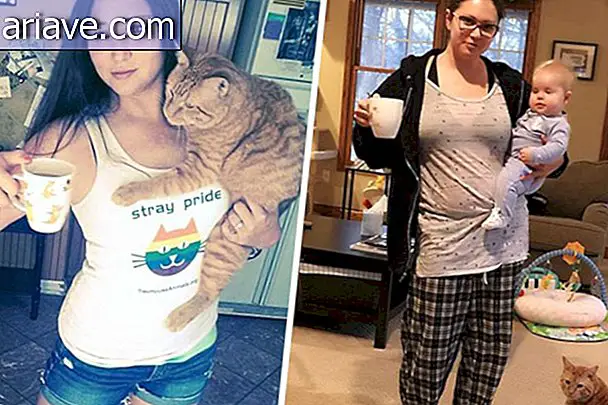Know the basic ingredients of a shampoo and how it came about
They are on the shelves of supermarkets and pharmacies and have a huge amount of bottles, fragrances and features. For oily, mixed or dry hair, brittle hair, fall arrest, anti-dandruff, chemically treated locks, you will always find a shampoo that meets the needs of your hair.
Moreover, they are available in a very diverse range of prices depending on the ingredients that are part of their composition: henna, aloe vera, chamomile, among many others. And there are those compounds that we have no idea what they mean. Ammonium Lauryl Sulphate? DMDM Hydantoin? What is it?
And then the question is: do you know what the basic ingredients of your shampoo are and what they mean? Unless you are a pharmacist or chemist, researching cosmetic compounds doesn't cross your mind. In order to clarify this question, we show what is made of this product so loved that leaves your hair always impeccable.

Basically that's it
There are two basic ingredients in shampoo composition: water - which makes up 80% of the volume of the cosmetic - and detergent. It's his cleansing power. Without it, the product would not be able to eliminate all the oils, grease and dirt that appear daily on the wires. The agent is part of 10% to 15% of shampoo.
By the way, did you know that there is a reason why we soap our hair twice? The first serves to bind the synthetic agents present in the detergent to the dirt, removing it completely. The second will cause the water molecules to mix with the fat, eliminating it with the rinse.
The other ingredients
But of course your shampoo doesn't just contain detergent and water. In fact, there are many other substances that are essential to make the product a deep cleansing agent as it is known, which also makes it a specific cosmetic for each type of hair. Among them are:
Fragrance
What would a shampoo look like without that tasty smell? Almost anything. It is often the most characteristic ingredient that makes people recognize and be true to a brand. When a company finds the right fragrance, it makes the patent and that aroma becomes unique, almost a secret.
Conditioning Agents
Silicon-based oils, such as dimethicone and cyclomethicone, are compounds that have the function of moisturizing your hair and preventing scalp irritation after all fats and dirt are removed. Panthenol or citric acid are other agents found in shampoo that serve to brighten the hair.
Thickeners
Do you know that creamy and dense aspect that shampoo has? So it is only possible thanks to thickeners. Would you like to pass a watery product that runs down your hands, or something sticky that sticks to your skin and causes irritation? Ammonium chloride - or sodium (this is the shampoo salt) - is widely used for this purpose.

However, as salt tends to slightly damage the strands and cause the eyes to sting too much, some brands replace the compound with more expensive thickeners, such as glycol, ethyl alcohol, ammonium xylene sulfonate, among many others, considerably reducing the amount of sodium chloride in the makeup of the cosmetic.
Modifiers
Just as thickeners are important for giving shampoo density and creaminess, modifiers are not far behind. They give the colors and textures of the product. Are you going to say that those pearlescent glow, those reflection particles, are not factors that make you decide for a brand? Glycol distearate is one of the ingredients used for this.
Foam boosters
Foam is as a visible result that the product is acting on the hair. So no matter how efficient the shampoo is, if it doesn't foam, we don't believe it's working. The two most commonly used types of foam boosters are lauramide DEA and cocamide DEA, fatty acid derivatives.
These two products work together with triethylene glycol, which in turn maintains that firmness, that "cloud" aspect. And to keep it that way, chemicals called alkanolamides are also used. All this together makes the foam stay in the hair and gives the feeling of cleanliness.

Preservatives
These ingredients are very important to keep your shampoo always valid. Faced with so many chemicals, it could create fungi and bacterial colonies by staying in damp places, but preservatives prevent this action. DMDM hydantoin, sodium benzoate, isothiazolinone and methylparaben are the most commonly used.
Cosmetics Regulation
In Brazil, all cosmetics, including shampoos and hair products, are regulated by the National Health Surveillance Agency (Anvisa), which requests the prohibition of the item if it does not present satisfactory results in the tests performed, staying outside the standards and, primarily, posing a health risk to consumers.
Companies are obliged to put the shampoo's expiration date in an easily viewable place. And it is the consumer's duty not to use the product if this period has passed. If you use it, you are aware that the preservative is no longer working and the cosmetic may easily be prone to fungal and bacterial growth.
This can cause various health problems such as irritation, redness, allergies, itching, ringworm, blisters, burns and various other things. The shelf life, especially of shampoos and conditioners, is usually 2 years. If you do not find the due date, check at least the date of manufacture and roughly calculate this time.
An increasingly consumed product
Shampoo is today one of the most consumed cosmetics. Thanks to the wide range of values, there are options for every pocket. In the United States, about $ 1 billion is spent each year on these products. Believe me, $ 40 billion is waived for shampoos.
Manufacturers need to invest in marketing to publicize their product differentials, having their loyal target audience and perhaps beating the competition. No matter what extracts are used for cosmetic production, there are always those who buy and advertise, especially when shampoo makes a difference to someone.
However, some consumers find that shampoos don't make much difference and continue their relentless pursuit of innovative hair care products. Therefore, industries are encouraged to create new cosmetics and, especially, worrying about the environment, since there is a great demand for this attitude.

How shampoos were created
Curiosities are always very cool, so we bring some interesting things about the cosmetic in question. For example, did you know that the word "shampoo" is a derivative of the Hindi word "chhamna", which means squeezing, kneading or massaging? But it has nothing to do with being rubbed on the scalp.
The shampoo would have emerged in India. Various herbal extracts such as Sapindus (a tree in the Lychee family) and currants were boiled, mashed and squeezed to form a liquid surfactant used in daily hygiene. This product spread to Europe since at that time people boiled scraped soap with water and herbs to create a liquid soap.
There are also some reports that the shampoo appeared in Indonesia and that the first was made from rice straw ashes mixed with water. People used this mixture to remove the fat from their hair and subsequently applied coconut oil as a conditioner to moisturize the strands, since the oils were all removed.
The shampoo as we know it today was created by Hans Schwarzkopf in Berlin in 1927, while Americans still used bar soap to clean their hair. Proctor and Gamble began manufacturing the product on a large scale and then came Drene, the first synthetic shampoo in history.
To make Drene a success, P&G invested in aggressive marketing campaigns and big media outlets, which made shampoo sales burst. The brand was in circulation until the mid-1970s, when the company decided to invest in the famous 2 in 1 Head & Shoulders.











